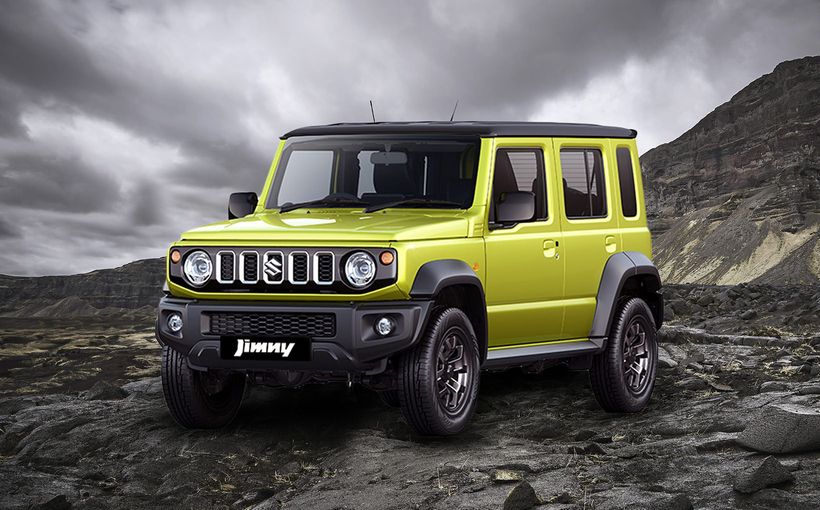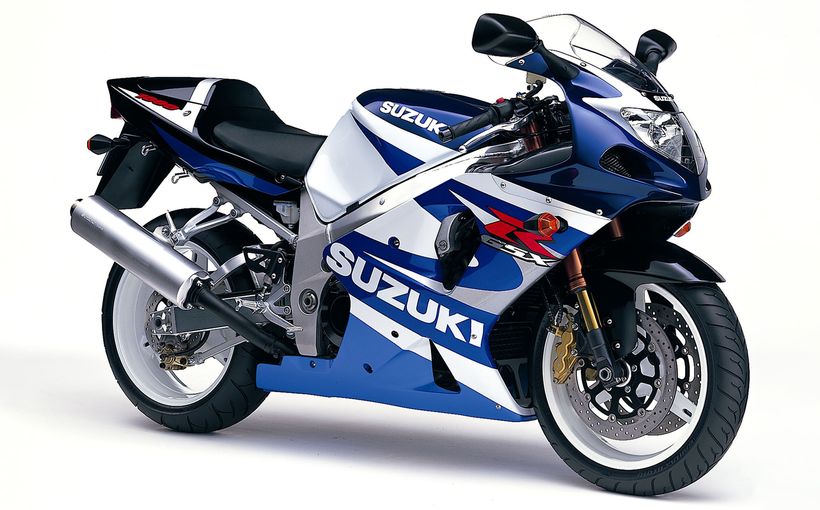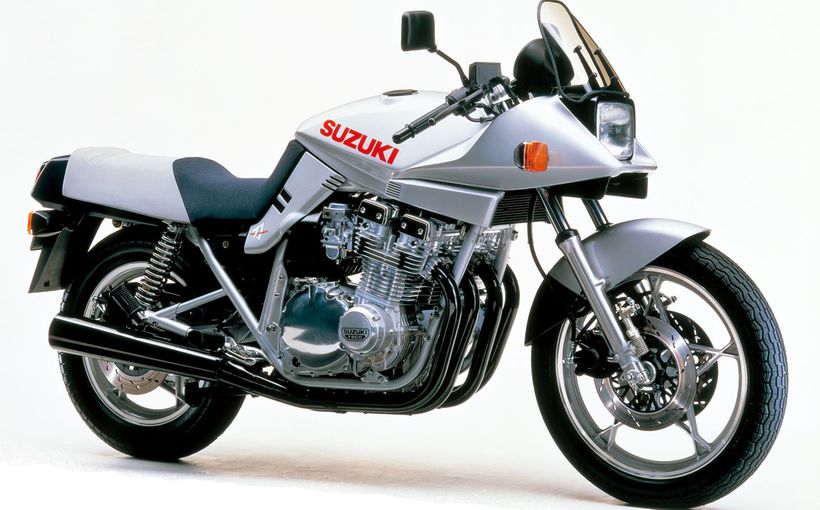2021 Suzuki Hayabusa Gen 3: Blistering Bus

By Phil James Photography Nigel Paterson
The rush provided by one of the best motors ever built for a motorcycle should not be underestimated. Pin the throttle of the new Hayabusa and you’ll know you’re alive, because the rush of adrenalin to the brain is intense. It goes very fast, very quickly.
This is a motorcycle for the highly skilled yet controlled rider: if you lack self-control or experience, don’t buy one. If you have those skills and want a big, strong sportsbike, the Hayabusa might just be the perfect bike.

UPDATES
Suzuki’s third generation Hayabusa is the first update to the iconic bruiser since 2013.
The bike isn’t “all new”, but the changes are substantial, and they move it forward without crimping its essential “Hayabusa…ness”. At ARR, we define that as “I’m big, I’m strong, I’m fast… you’ve been warned”.
For 2021 the engine and styling have been refreshed, the chassis has been tweaked and the biggest change, a premium electronic package, is now included. The electronics are now some of the most adjustable and sophisticated on the market.
Euro 5 compliance was probably the catalyst for the update (like many bikes), but Suzuki has done much more than that.
The engine has improved user friendliness, with more power available at typical riding rpm, courtesy of reduced valve overlap. There’s a slight drop in power (7hp) and torque (5Nm).
Should this be a concern for potential buyers? The answer is no, the ’bus remains the muscle-bound monster it always was. It’s more a problem for the marketing department than anybody else.
Losing 7hp may be noticeable if the rider finds himself flat out on a dry salt lake… otherwise it’s not.
The top speed is unattainable anyway, the bike is limited to 299km/h. Suzuki claim this is easily reached (and we believe them). It’s likely the improvement in the aerodynamics counteract the small drop in maximum power. We can only guess at what that top speed might be, and… it doesn’t matter in Australia anyway.

What matters is Suzuki has done a good job with this new engine tune, and the proof is in the pudding. The new bike equals, or slightly betters the old one on the drag strip. It’s also smoother.
Many engine parts have been updated too, making one of the strongest engines on the market… even more so. ’Bus engines are often used in competition four wheelers for exactly this reason.
The frame holding that engine closely resembles the previous version, with its blending of cast and (more expensive) extruded aluminium sections. This mix and match construction allows a better compromise between stiffness for high-speed stability, and flex for tyre grip at extreme lean angles.
Dimensionally the chassis changes are small, but all go in the right direction. Wheelbase is down by 5mm. Reach to the ’bars is down by a commendable 12mm and ground clearance is up by 5mm.
Optimising frame potential requires good suspension. The Gen3 suspension hasn’t followed the trend to electronic semi-active damping, but is fitted with quality, fully adjustable, KYB suspension. The dampers have unspecified internal changes, which ARR suspect reduce stiction. Improved grip when ridden enthusiastically and a more supple ride is the result.
In another departure from current fashion, there’s a conventional dash rather than a large screen. The dash with its internal scale marker lighting has an upmarket feel to it. There is a small screen. It offers two display options, cruise control and data on bike’s dynamic state (things like lean angle and throttle position).

THE RIDE
Suzuki present the Hayabusa as a premium sport offering. The engine, suspension, electronic package, and rider ergonomics are all skewed towards achieving that outcome.
The riding position will be a key issue for many perspective buyers, so we’ll nail that down first.
The Hayabusa is a more relaxed ride than a GSX-R1000 while still offering excellent control and feedback during full attack. There is significant weight on the wrists when cruising (particularly for riders with shorter arms).
Alternatively, taller riders may find the knee angle a bit tight for longer rides. There is an affordable, accessory premium seat which may help, but a taller seat is something long legged riders would appreciate.
We’d summarise it comfort wise as sitting between a 1000cc supersport and a typical sport-tourer. Riders unable to tolerate moderate wrist weight will be happier than on a GSX-R but may struggle on longer commutes.
As with all sports bikes, it comes down to how much discomfort develops between home and the local twisty road. Once on the local twisty road, it all comes together beautifully.


Interestingly, apart from ergonomics, the ’Bus wasn’t quite the bike we were expecting. It has a reputation of being the ultimate 18” artillery shell with handlebars. That’s not wrong either, pull the trigger and it goes bang - like it’s leaving the Yamato’s forward turret. (Google it young folk).
Where the bike does surprise is corner tip in. As a 267kg bike, with a longish (for a sport bike) 1480mm wheelbase, one doesn’t expect quick turn in, but it does. It’s nearly as sharp as the average race replica… so much so initially I kept undershooting my apexes and it took a few corners to recalibrate. This bike is far more agile than its specs suggest.
The technically minded will note the steering rake of 23 degrees is a more stable setting than the average supersport (by about two degrees). Trail goes the other way, at 90mm it is shortish, thus lightening the steering. It works, the steering is light, responsive and stable. There’s a steering damper for insurance too.
The suspension specs suggest “sufficient” was the design objective, rather than great. There’s no electronic control. Damping variation is via old school screwdriver adjustment with flow control valves. Here again the Hayabusa surprises, the suspension (from KYB) is some of the best OEM we’ve experienced and gives little, if anything away to an electronic semi-active system.
Ideal suspension gives a smooth ride without wallow. In this perfect world constant ride height is maintained, leading to constant steering geometry. This will keep the bike stable in a wide range of conditions. Few bikes come close to achieving this, (electronic suspension or not) but the Hayabusa does better than most.

It has typical short travel sport bike suspension and sharp bumps will blow through this travel. There’s no high-speed compression adjustment on the shock either (few OEM suspensions feature this, so we won’t mark it down). Consequently, the occasional belt up the backside occurs, but it’s impressively good given these limitations. As road-oriented, sports suspension, ARR mark it 9 out of 10.
The suspension has a wide range of adjustment too. It can be tightened right up, so track days are within its skill set.
Despite lack of electronic suspension, the Hayabusa isn’t electronically challenged. There’s a lot going on, and it’s described in a bit more detail in the sidebar.
The speed limiting feature is a first. I’m not a fan, but I can see why it may be useful.
One thing that may irritate is the throttle return spring. It’s relatively stiff, this is great for attack riding as it’s easier feel the relative throttle position. When cruising it’s a bit hard on the hand muscles. Fortunately, the cruise control works well, owners will be using it often on longer rides. The cruise engagement switch is on the throttle side and can upset current throttle position when using, we’d rather see it on the left side.

The right hand won’t have any trouble with the brakes. They are state of the art: light lever pressure produces powerful, easily control braking. The front brake also applies the rear, whilst the foot brake activates the rear only. There are some clever electronics that keep the rear on the ground too. It’s cleverer than most as it compensates for slope. Riding loaded down a steep hill generates an earlier intervention than when riding on the flat.
Riding in one of the three default modes, with factory suspension settings, shows how capable the Hayabusa is. Finding a smooth, flowing rhythm is easy. Ramping pace up and down is almost instant, it is just a matter of thinking about it… and it happens. This reflects the superb chassis as much as it does the powerful, predictable brakes and strong engine.
As mentioned above, we explored the custom settings to optimise the bike for our test loop. Dialling out most of the traction control, reducing the engine braking and selecting our preferred quickshifter map took the bike to the next level. Low stress, quick riding was ridiculously easy. Throwing the bike through a series of poorly surfaced 60km/h corners was a joy.

At one point I was riding the on a treacherous, shaded C-Road, when mid-corner, some unannounced tar patching presented itself, catching me off guard. Most of the road was covered in loose stones. As the ’bus braked towards the apex it drifted sideways a little, but held its line, it didn’t come close to losing its composure. Impressive! That moment proved (yet again) the value of riding well within one’s limits.
The aerodynamic efficiency is noticeable at highway speed, there is no turbulence or buffeting. The air slides around the rider, as opposed to placing the rider in a bubble (as a touring bike would). Air pressure can be felt on the shoulders and helmet but it’s an even, smooth sensation. It’s an odd, but pleasant sensation and difficult to put into words.
The Quickshift deserves special mention as it’s one of the best we have used – it even works at low rpm around town.
The analogue dash is easy to read and changing electronic set up is intuitive (it’s like dropping values into a spreadsheet). The speedo is good, but not large digital readout “good”. On this bike… it’s a drawback (all those numbers going to 290). We think there’s an opportunity for improvement: conscripting the centre TFT screen as an additional option displaying digital speed.
The weight of the bike is only an issue when manoeuvring or doing a U-turn, where the clip-on bars are a bit awkward. Overall, we think the weight helps the bike more than hurts it, providing stability and rough road grip.

The punchline from all the above… in most on road situations, it is equal to (or sometimes better than) the GSX-R1000. It’s also more comfortable. The GSX-R (and others of its ilk) only get the better of the Hayabusa on a smooth track, where the weight of the bike starts to work against it.
Comfort wise, the Hayabusa isn’t far from par as a sports-touring bike. Smoothness, refinement, ride, seat comfort and airflow around the rider are all top notch. The sport bike ergos derail it somewhat for all day in the saddle riding. Otherwise, it is good, so good we wish Suzuki would do a GT version.

LIVING WITH THE BUS
Styling of previous Hayabusas was a bit polarising. It may not have been pretty, but it was purposeful. The new bike, however, is a much more elegant interpretation of Hayabusa styling cues. It’s not just us, several times bystanders commented favourably about it without prompting.
Some design features such as the front mudguard and mirrors are beautifully done. The mirrors look even more aerodynamic when in the retracted position, where you’ll push them for a track day. Overall, the fit and finish of the bike is first rate, reflecting its premium status.
Hayabusa owners will no longer have to put up with unflattering comments about the styling from the engineeringly ignorant.
Suzuki has often embraced the KISS principle where possible. There’s no remote key fob (at least the key is guaranteed to finish the ride with the bike) and there’s no phone app.
Happily, Suzuki offer a range of accessories. There are some billet parts and touring parts. The best value options are the Billet Pack (front axle protection, chain adjusters, levers and oil cap) and/or the Touring Pack (Heated grips, touring screen, luggage hooks, tank pads, protection decals and the single seat cowl). Slip-on Arkrapovic mufflers are also offered.


NOTES FOR POTENTIAL OWNERS
Fitting bobbins to the swingarm and using a good quality paddock stand (it’s a heavy bike, don’t go cheap) will facilitate rear wheel cleaning and chain maintenance.
The weight does show in the bike’s fuel consumption. It’s not terrible, but enthusiastic riding will ramp it up. The 20 litre tank will do around 300k before the rider gets range anxiety.
Looking at the service schedule indicates oil changes every 6K, with replacement of oil filter and plugs, plus valve clearance check at 24K intervals. Suzukis have a reputation as being one of the easier bikes for valve clearance checking, and it is likely the new bike retains that.
CONCLUSION
The Hayabusa was a surprise for us. The expectation was a heavy bike, with big power and a chassis biased towards Autobahn conditions. The reality is much better. We think it is one of the best street-focused sportbikes on the market.
At ARR we’re glad Suzuki has chosen to further develop the “Bus”, as it continues to bring “out of the ordinary” performance at relatively cheap price. If it had “made in EU” stamped on the frame it would cost $15k more.
The Hayabusa is a fitting “halo” bike for Suzuki. Over time, its legendary status in motorcycle folklore will continue to grow. Here’s an ARR top tip, if you’re a collector – get one, in the long term they’ll hold value (the 1999 models are already considered highly collectable, their value has been spiking for some time now).

SPECIFICATIONS:2021 SUZUKI HAYABUSA
ENGINE
Liquid-cooled, 4-stroke, DOHC, 4-valve, 4-cylinder
Capacity: 1340cc
Bore x stroke: 81 x 65mm
Compression ratio: 12.5:1
Fuel System: Fuel Injection,
Ignition: Digital
TRANSMISSION
Type: 6 speed
Final drive: Chain
Clutch: Wet multiplate, Assist and Slipper function
CHASSIS AND RUNNING GEAR
Chassis: Aluminum cast and extruded sections.
Swingarm: Aluminum
Front suspension: KYB telescopic upside-down fork, compression, rebound, spring preload adjustment.
Rear suspension: KYB shock with compression, rebound and ring style preload adjustment.
Front brakes: Brembo Stylema radial-mount callipers, Semi floating dual discs, 310mm, ABS
Rear brake: Nissin single piston calliper, single disc, ABS
Tyres: Front: 120/70ZR17 (58W) Rear: 190/50ZR17M/C (73W)
ELECTRONIC RIDER AIDS
Brake Control (ABS): Yes. Corner and slope sensitive, Combined braking from front brake.
Engine Power Modes: 3 modes
Traction Control: 10 modes and off
Wheelie Control: 10 modes and off
Engine Brake Control: 3 modes and off
Launch Control: 3 modes and off
Quick Shifter: Bi-directional. 2 modes and off
Speed Limit Setting: Yes
Cruise Control: Yes
Engine Start Assist: Yes
Low Rpm Start Assist: yes
Hill Hold System: Yes
Emergency Stop light Control: Yes
DIMENSIONS AND CAPACITIES
Rake: 23 deg
Trail: 90mm
Claimed wet weight: 264Kg
Ground Clearance: 125mm
Seat height: 800mm
Wheelbase: 1480 mm
Fuel capacity: 20L
ETCETERA
Price: $27,690 (ride away)
Colours: Glass Sparkle Black/ Candy Burnt Orange (B5L)
Metallic Mat Sword Silver/ Candy Daring Red (B5M)
Test bike supplied by Suzuki Australia
Warranty: 2 years, unlimited kilometres.









